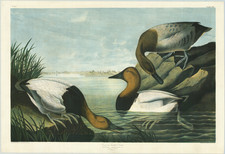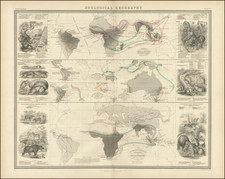Lophius Piscatorius. Der See Teufel Le Diable de Mer. The Sea Devil, engraved by Ludewig Schmidt and authored by Marcus Elieser Bloch, was published in Berlin, Paris, and London, between 1785-1788. This stunning hand-colored engraving, from the third volume of the series Ichtylogie, ou Histoire naturelle: générale et particuliére des poissons, provides an engaging depiction of the Lophius piscatorius, commonly recognized as the European angler or common monkfish.
Marcus Elieser Bloch's Ichtylogie is one of the epochal works on ichthyology from the 18th century. The period itself saw a rapid growth in scientific inquiry, with marine biology emerging as a pivotal area of research. European nations, with their vast colonial empires, began cataloging and understanding the diverse species their explorers encountered, signifying both their scientific and geopolitical prowess. The European angler, dwelling in the northeast Atlantic waters ranging from the Barents Sea to the Strait of Gibraltar and further extending into the Mediterranean and the Black Sea, symbolizes this European interest in the maritime world.
The precision and detail captured by Ludewig Schmidt's engraving technique showcases the deep scientific curiosity and the artistic inclination of the era. Beyond mere artistic representation, the depiction captures the angler in its intricate form, shedding light on its anatomy and cultural significance. The monkfish's importance is underscored by its value within commercial fisheries, particularly in regions like the Irish Sea.
This specific rendering of the "Sea Devil" serves as more than just a visual treat. It stands as a testament to the blending of art and science in the late 18th century, representing a time when European scholars and artists worked collaboratively, striving to understand, depict, and categorize the natural world around them.












![[ Astronomer William Herschel ] Wm. Herschel](https://storage.googleapis.com/raremaps/img/small/99581.jpg)

